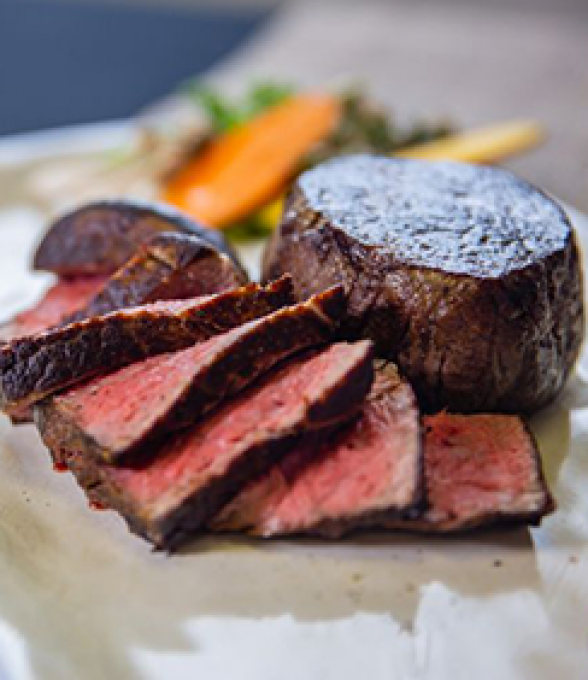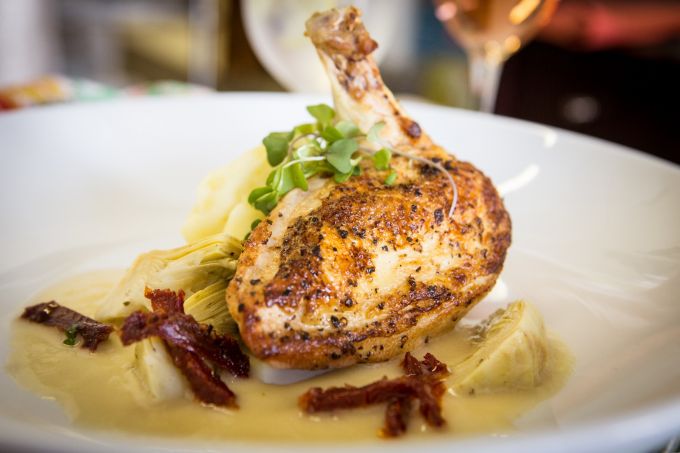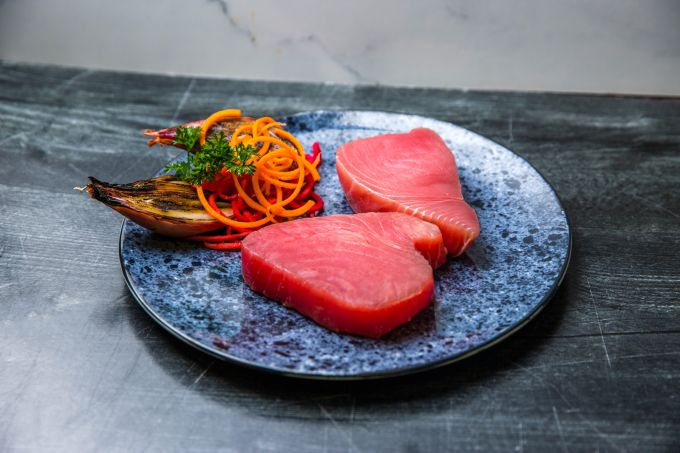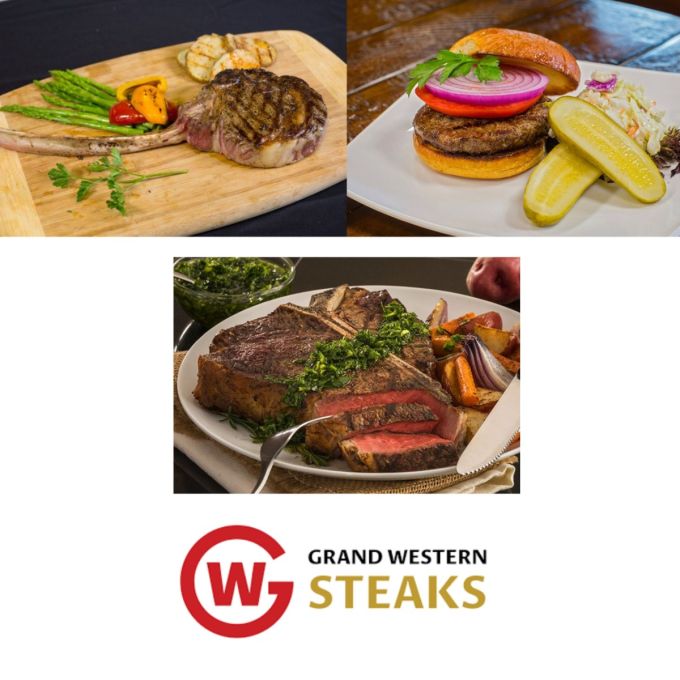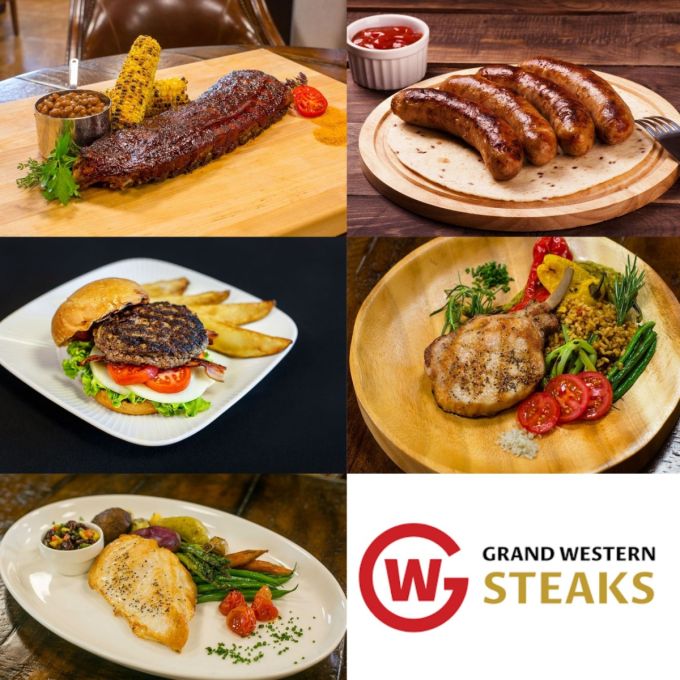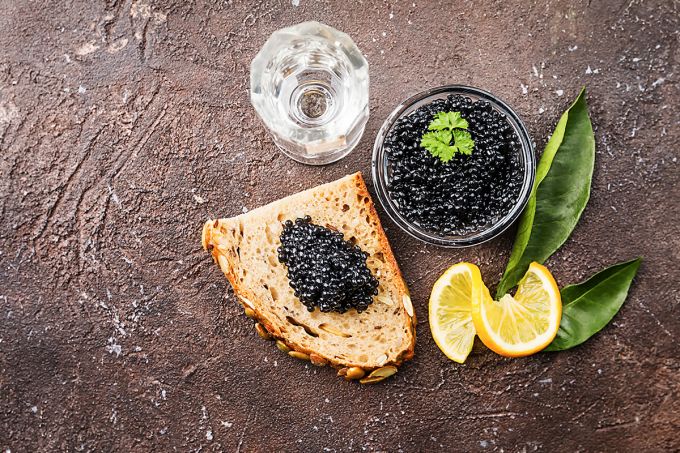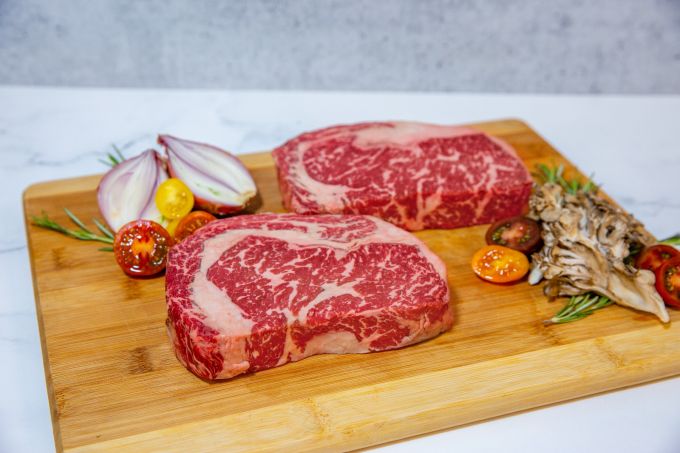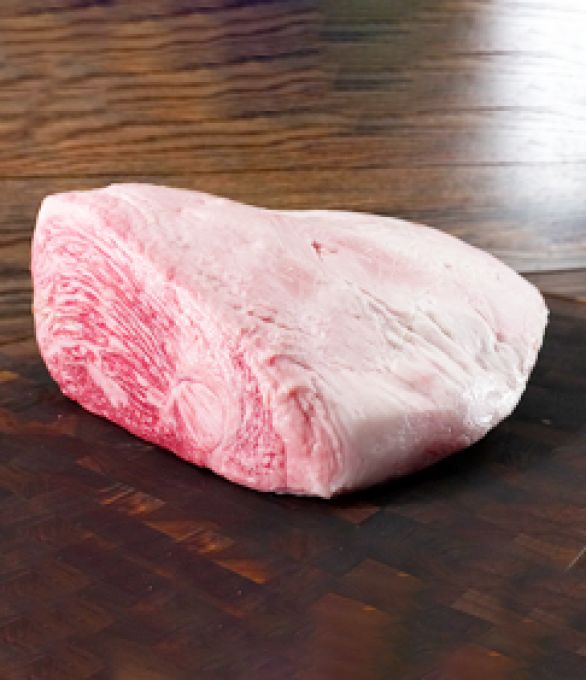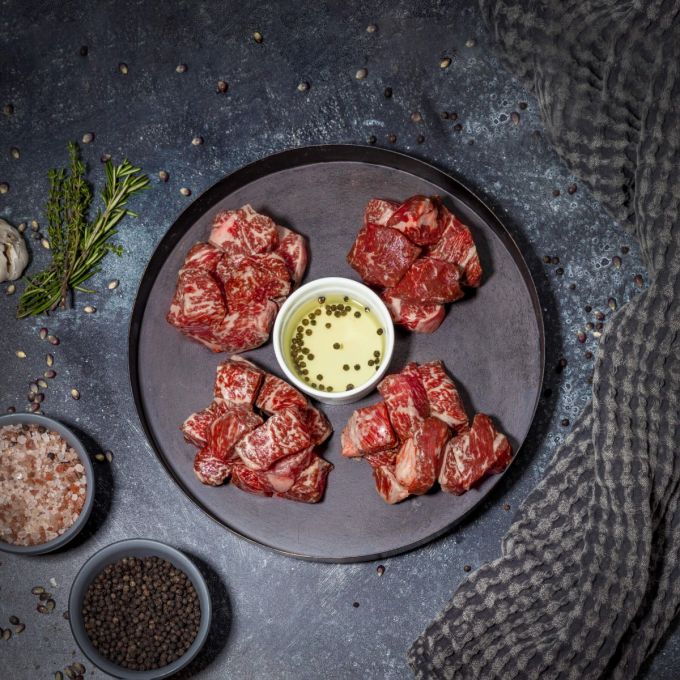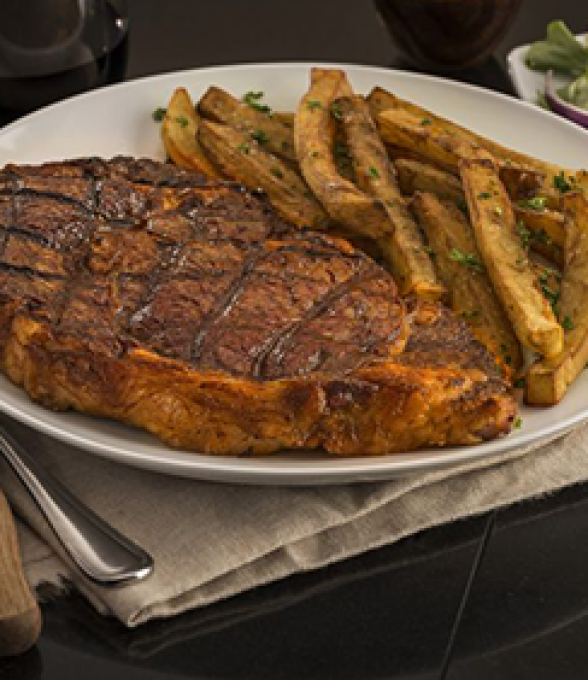Rich flavor and tenderness are what define the ribeye cut. When compared to t-bone and strip steak, ribeye is almost always the fan favorite.
The cut comes from between the loin and shoulder - ribs six through 12.
Beef: Filet Mignon • Rib Eye Steak • Porterhouse & T-Bone Steak • Tomahawk & Rib Steaks
How to season ribeyes
Delight in out-of-this-world fat marbling, packing incredibly rich flavor and exquisite texture. Just use pinches of salt and pepper to preserve the impeccable flavor of the ribeye filet. Salt draws water from the steak and creates beads of moisture on the surface.
The beads are then reabsorbed into the muscle strands. A quick brine will produce delicious flavor and tenderness. Let the salt set for at least 45 minutes.
This cut is best cooked by pan searing in a cast iron skillet with a pat of butter. Pan searing allows the fat to tenderize naturally.
Ribeye is at its best rare or medium rare. It can still be flavorful at medium well. Cuts closer to the head of the cow provide more marbling that melts from the inside out during cooking to ensure abundant buttery flavor.
How to cook ribeye steaks
Selections:
- Wagyu
- Prime Angus
- Jack`s Creek
- Reserve
- Wagyu Bone-in
Thickness
Use the reverse searing method on ribeye steaks that are one-and-a-half to two inches thick for a cooked center without being overcooked.
Temperature
Internal temperatures should reach 130 to 140ºF during the cooking process for medium rare, 140 to 150ºF for medium.
Resting
Cooking will continue during the resting process for about 10 minutes, with meat temperatures rising by about five degrees. Resting allows juices to evenly distribute.
Bone-in versus boneless ribeyes
A bone-in ribeye steak is more complex than a boneless one. Bones keep the heat in during the cooking process so they can retain their juiciness. When cooking a bone-in steak, remember that meat above the bone cooks faster and meat lower down takes longer to cook.
Prime rib versus ribeye
Prime rib comes from rib bones 7-11 while ribeye is bones six through 12. Prime rib is cut from the rib roast after cooking and ribeye is taken from the rib roast before cooking. Cook prime rib on low heat for a longer period of time. Ribeye cooks best with dry heat.
Wagyu ribeye
Ribeye is the king of marbling in the steak realm, and Wagyu is the overall marble king of beef. It doesn`t come as a surprise that ribeye brings the kings together for any steak lover`s dream.




